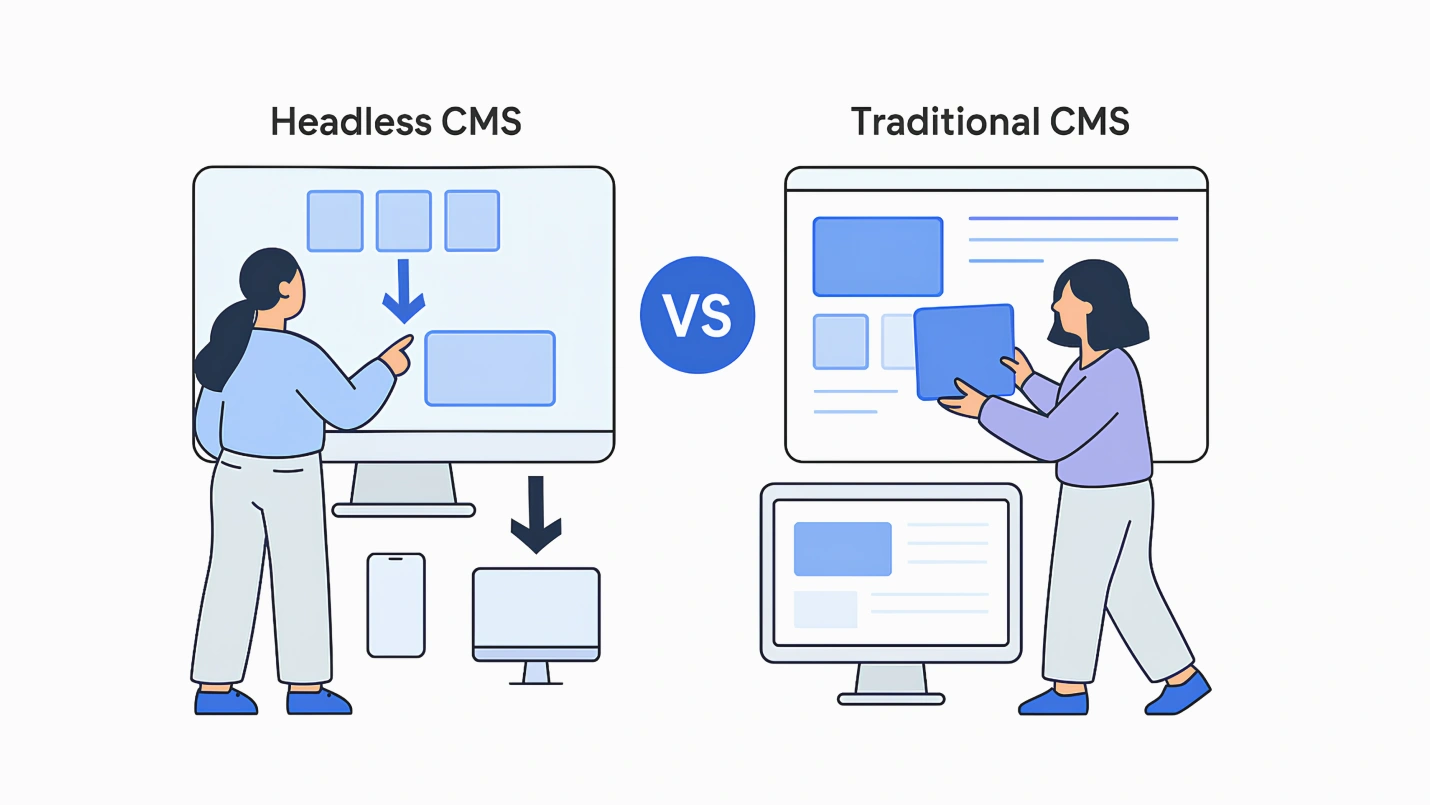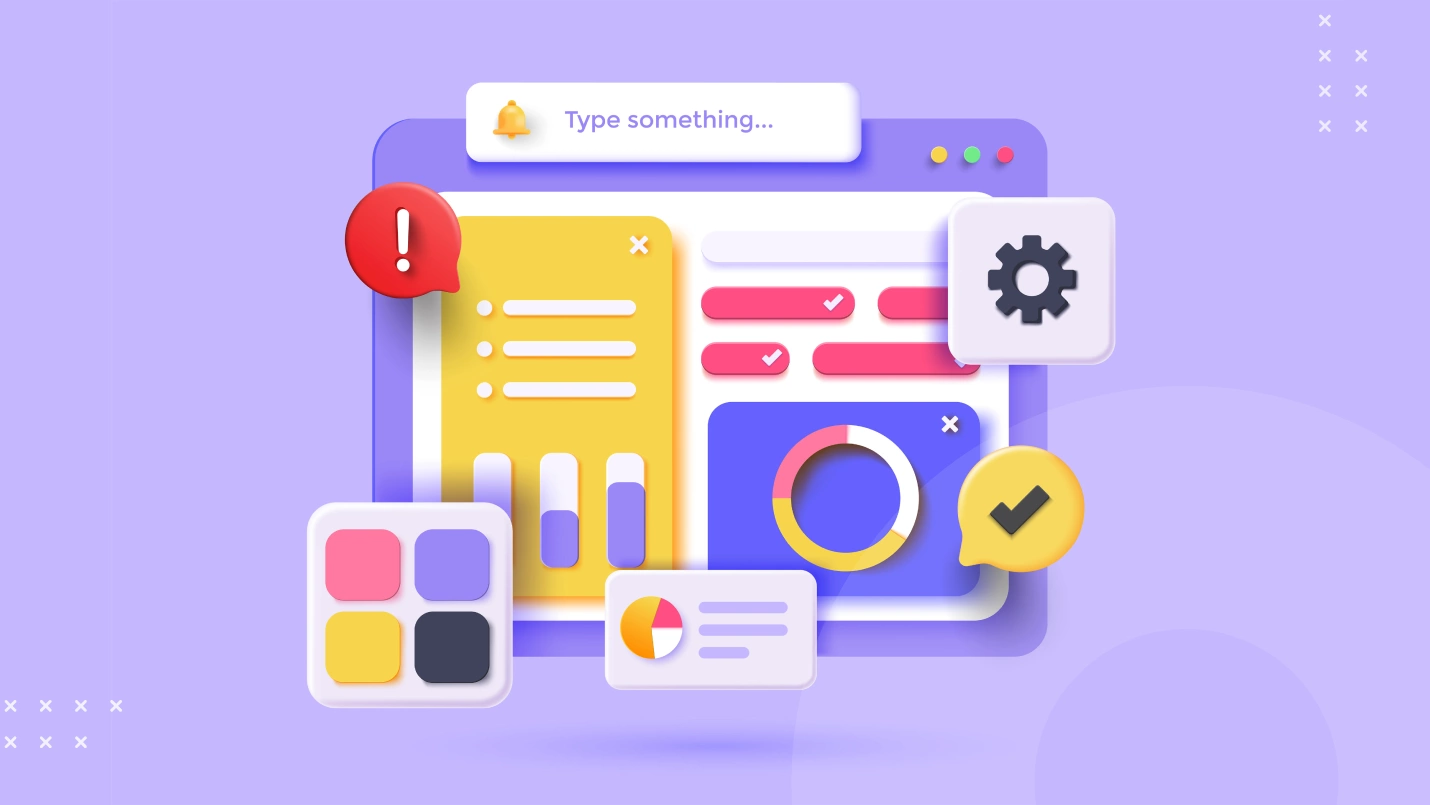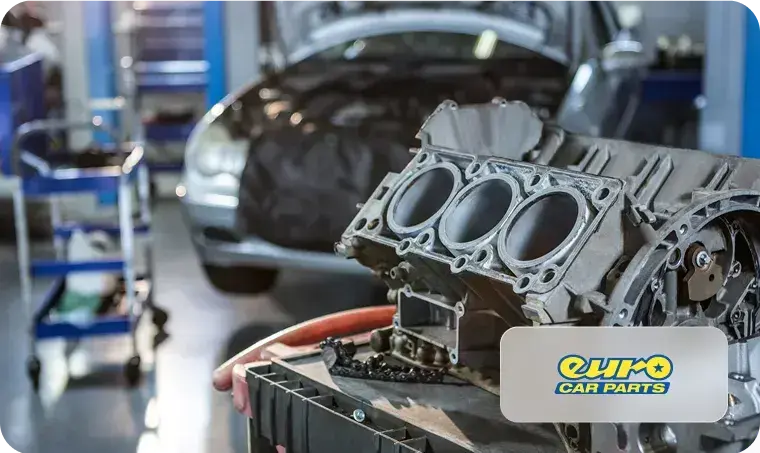A Content Management System (CMS) is the backbone of any modern business, helping create and manage digital content. Still, it should come as no surprise that the technology behind a CMS has undergone its digital transformation.
The more traditional CMS, where the front and back ends are tightly coupled, is not always meeting the demands of today’s content operators. In the search for a more flexible technology stack, many brands are deploying more than one CMS and/or are leveraging more modern capabilities inherent in a headless CMS, a CMS that separates the two ends. The Storyblok report ‘The State of CMS 2023’ which took a sample of about 1700 organizations, states that 58% of the businesses use CMS and 36% organizations use headless CMS.
This post will explore Headless CMS vs. Traditional in terms of key differences and common brands of each and explore the pros and cons of each type of CMS to help clarify how to select your ideal CMS.
Brief Overview of Headless CMS and Traditional CMS
What is a CMS?
A content management system (CMS) is software used to build, organize, publish, and manage digital content for websites, mobile applications, portals, and other online solutions. Digital content can take the form of any asset, including blog posts, product pages, eBooks, press releases, and more, handling everything from text and graphics to layout and page navigation. Some CMS platforms are “all in one” with integrated
eCommerce platform capabilities to sell products in an eCommerce market.
A CMS makes it easy to manage this digital content, providing easy tools to create and organize content, such as templates and simplified workflows, and the capability to assign different privileges to different user roles (e.g., Authors can write but not publish, Editors or Admins can publish and modify). Some CMS solutions are considered “no code low code” options, relying primarily on simple drag-and-drop interfaces.
A CMS has two parts: the front end, head or presentation layer (where you see the content), and the backend, where the content lives. This is the key differentiator between traditional (where they are tightly coupled) and headless (where they are not).
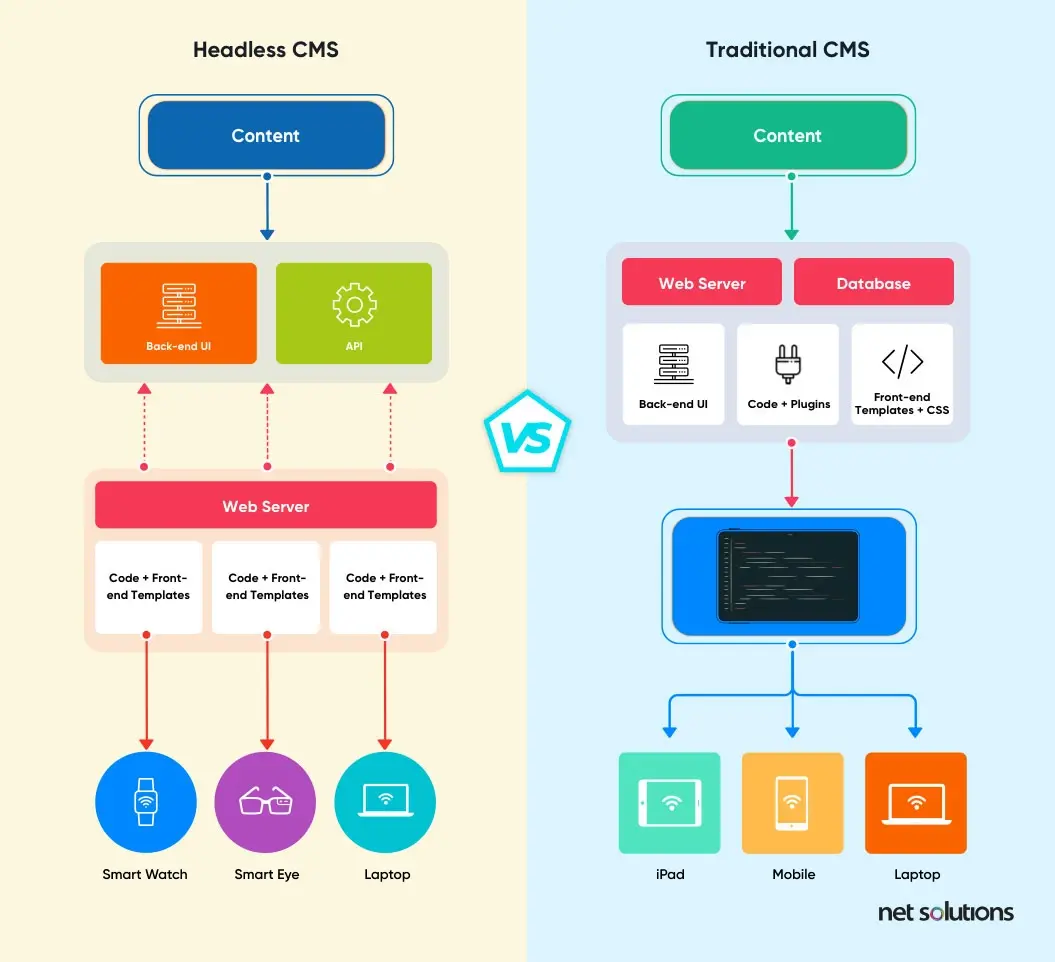
What Caused the Split between Traditional CMS and Headless CMS
New technologies and ongoing shifts in consumer preferences have created the demand for more personalized, interactive
digital experiences,
including
omnichannel digital commerce
experiences and the greater use of new and trending technologies.

Consumers are looking for these experiences to be continuous wherever they are – regardless of the device they’re using or the channel they are on, whether email, social media, app, website, or in-store. This is the origin of omnichannel marketing. Unfortunately, if omnichannel marketing is your goal, traditional CMS cannot deliver – the tightly coupled front and back end means that content and content style are matched together, optimized to deliver to a single digital touchpoint, not many. As a result, there was duplication of content (and CMS’) to deliver to multiple channels, a costly and disjointed process.
A new breed of CMS was created from this demand: one that was more flexible to be published to any channel or device.
This is the origin story for the headless CMS, which can be examined in more detail in our
Guide to Content Management Systems
and explained below.
Headless CMS Vs. Traditional CMS: Key Differences
Before a detailed analysis of Headless vs. Traditional CMS, here’s a brief overview of the key differences (although features and capabilities can vary among platforms):
| Traditional CMS | Headless CMS | |
|---|---|---|
| Architecture | Monolithic, front-end, and back-end are tightly coupled. Content rendered on one platform. | Decoupled, API-driven, microservices-based. |
| Content Delivery | Delivered from the CMS directly to the web or application. | Delivered through APIs to the web, mobile web, web apps, IoT, POS, PWA, SPA, AR/VR + more. |
| Scalability | Limited by architecture. | Highly scalable, spikes supported by microservices. |
| Integrations | Limited flexibility, often relies heavily on features of CMS. | Wide range of integrations to third-party tools via API. |
| Security | The entire system gets vulnerable if one part is compromised. Depends on CMS and its update schedule. | It may require more attention to various services and APIs but is more resilient due to independent microservices. |
| Usability | User-friendly interface, suitable for non-developers. | More developer-oriented, requires technical expertise. |
| Implementations | Faster setup for smaller & simpler projects. | May require more development time, but suitable for complex or rich projects or multichannel needs (with supported frontends). |
| Hosting | Provided by the CMS, on-premise mainly. | Can be determined independent of CMS. |
| Maintenance | Requires scheduled maintenance of the CMS platform. | Supports continuous updates, but often more oversight of various backend and frontend components. |
| Payment | Vary. Up-front or subscription. Added cost to reach additional channels or features (e.g., eCommerce). | Variable, often usage-based. Must consider the cost of microservices as well. |
What is a Headless CMS?
A
headless CMS
decouples the backend database from the front end, retrieving the unformatted content and delivering it across multiple platforms or channels with custom front-ends.
A headless CMS doesn’t concern itself with where the content is going or what it will look like – it provides the API to retrieve the content and leaves the rest to developers.
This flexibility allows a headless CMS to become the building block for many products and devices. Because of the flexibility of a headless CMS to support multiple devices and platforms,
it is the top choice for powering eCommerce websites and
omnichannel retailing.
The Headless CMS market size was
valued
at around USD 605 Million in 2022 and is expected to grow to USD 3.8 Billion in 2032, which is a
CAGR of 22.1%
from 2022 to 2032.
Read on for the
Headless CMS examples
and specific eCommerce use cases in this post.
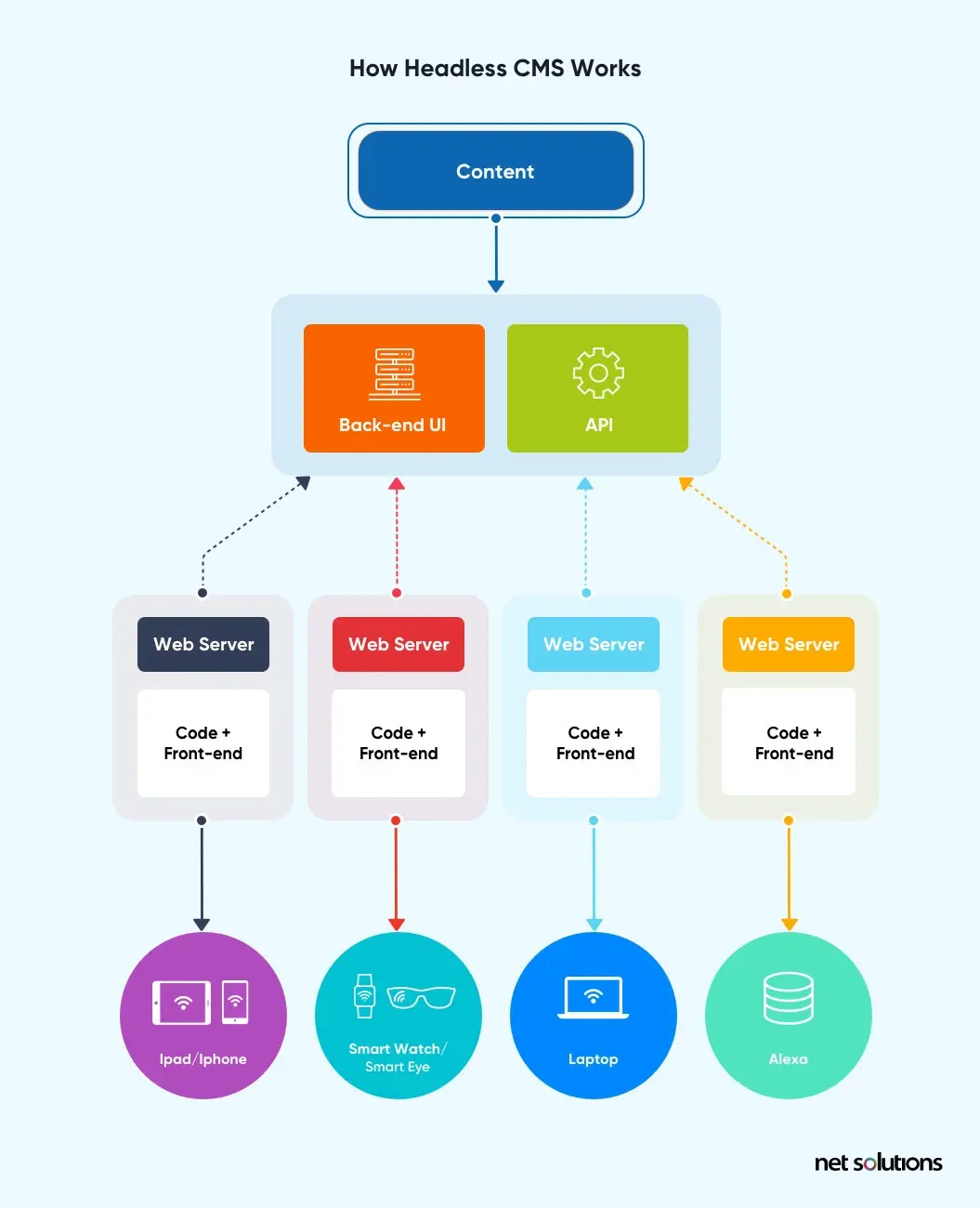
Key Features and Components of Headless CMS
- API: APIs such as the REST API and GraphQL API push content from storage to the presentation layer and communicate between various microservices.
- Integration ability: The headless CMS is a simple repository for storing and managing data. Still, the rest of the delivery depends on what services are integrated into the CMS, all made easy by API. Allowers can customize the technology stack with third-party applications (microservices) such as CRM platforms, ERP tools, process automation, analytics, and more to help support content marketing with a best-in-class experience.
- Content management tools: Every CMS provides essential capabilities to create and manage content, including setting up permissions/user roles, creating and editing text simply, and supporting publishing workflows.
- Developers resources: Developers and administrators are supplied with tools such as APIs, webhooks, web frameworks, SDKs, documentation and support. A headless CMS requires more developer effort to manage integration and configuration.
Note, some traditional CMS’ offer a “nearly headless” experience that’s actually only decoupled – read more
here.
Pros and Cons of Headless CMS
What is the benefit of headless CMS? What is the drawback of headless CMS? Read on.
Pros
- Flexible for developers: Use any language or framework, any microservice, to any device, with any front-end design.
- Scalable: As content only, adjusts well to surges and delivers a better end-user experience. Cloud-native CMS supports economies of scale.
- Multi-channel support/content reusability: Content is decoupled, and the channels can expand without increasing workload.
- API integrations: Content can be sent via API to any channel or platform (front-end agnostic) with support for API communication between services.
- Streamlined content management: Edits to content can be pushed to all channels simultaneously. Edits to content can be made without developer support.
- Performance: Fast Content Delivery
- Secure: Minimizes risk by allowing greater choice in services and separation of services from content, minimizing risk from attacks on the frontend.
Cons
- Complexity: A more fragmented tech stack requires more oversight over various components and a more significant requirement for IT skills to manage CMS.
- Technical expertise: Technical expertise Not as friendly for marketers to use; SEO has to be added and managed separately.
- No preview: There is no content preview / visual editing by default.
- Requires ‘head’: By default, the headless CMS relies on other technologies for the heads.
- Costs: While the CMS may not be more expensive, the total cost of ownership must consider all various front-ends and services, and developer time against the benefits of better performance.
When to Use Headless CMS
Why would you need a headless CMS? There are several reasons why headless may be right for you:
- Marketing is currently managing several CMS platforms, so content updates take a long time
- Omnichannel marketing is a priority (you need to publish to many places at once)
- Development bottlenecks marketing
- Your business website is central to your digital experience
- You rely on native mobile apps
- Enterprise-level security is a must
- You need custom integrations (vs. “plug-ins”)
What is a Traditional CMS?
A traditional CMS, sometimes called a monolithic CMS, can be considered more like a single entity storing everything in one place: content, images, HTML, and CSS to manage the front end. Combining content and code makes it intuitive to create new content – but hard to re-use. Traditional CMS examples for websites can be found here, representing still the most commonly used CMS’: WordPress, Adobe Experience Manager, WebFlow, Magento, HubSpot, and Drupal.
Key Features and Components of Traditional CMS
- Monolithic platform: The front and back ends are coupled into one giant platform.
- Templates and plug-ins: Templates and plugins help optimize how content is displayed (for the web) and the supported features.
- Easy content management tools: Traditional CMS platforms are designed to be user-friendly, with easy templates, editing tools, versioning, permissions, and previews. Traditional CMS platforms are designed to be used by non-technical business users.
Pros and Cons of Traditional CMS
Pros
- User-friendly: Designed for anyone with simple interfaces, drag and drop, and live-editing
- Quick setup: Often out-of-the-box and easy for anyone to deploy
- Built-in features: Everything in your CMS is there – you can leverage core features (variable per platform) or browse a library of “plug-ins” (note, these are not services that use APIs and can introduce unvetted security risks).
- Simplified maintenance: You only have one thing to update – your CMS.
Cons
- Limited flexibility: There is a tradeoff between out-of-the-box capabilities and the ability to customize a website within the parameters of templates and plug-ins, with limited ability to integrate with other services or platforms.
- Scalability challenges: Content cannot be reused across channels or devices, often leading to multiple CMSs and multiple content repositories, with the architecture making it difficult to optimize resources or distribute workloads. Monolithic architecture can introduce performance issues as well.
- Dependency: Some CMSs restrict access to the entire code base, making it difficult to switch services.
- Mobile and IoT limitations: Most provide website-only content, with some margin of support for mobile web, with little to no support for mobile apps, IoT, or other channels.
- Security:The many plug-ins can introduce vulnerabilities that rely on third-party patching.
- Limited integrations: CMSs rely on plug-ins (pre-made applications) vs. APIs and integrations, limiting what you can add to expand features or functionality.
When to Use Traditional CMS
There are several reasons a traditional CMS may still be the right choice for you:
- You only need a simple website with little to no personality or updates to incorporate new technologies
- You have limited development support
- Omnichannel digital experiences are not a priority
How Net Solutions Can Help You Choose the Right CMS for Your Business
In today’s digital economy, you must build brand loyalty and attract new customers with a curated experience and exceptional services. Many businesses seek ecommerce development services to integrate their online stores with CMS platforms, ensuring a seamless shopping experience for their customers. This calls for a partner who is familiar with the ins and outs of various CMS and eCommerce platforms and knows how to marry analytics, design, and development to create exceptional experiences.
Net Solutions can help you optimize every aspect of your digital brand – starting with making the right choice on the CMS you use to manage all your content. Talk to us if you need help in choosing the right CMS platform.
Frequently Asked Questions
A headless CMS is ideal for any organization with more than a ‘simple’ need for content delivery but more complex needs for content delivery across multiple platforms or devices or who wants to integrate with new, leading-edge services.
Yes, using multiple CMS to power a website is possible, but this can increase development efforts to ensure performance is not impacted.
Yes and no. A headless CMS can require more technical skill, but headless CMS stores content as unformatted, making it faster and easier to update content only in one place vs. potentially in multiple CMSs’ per platform/device.
Yes, in most cases, it is possible to migrate content, but the effort will depend on the system(s) in mind and the migration tools available (vendor lock-in can be an issue, but there are always solutions to this problem when working with qualified professionals).

